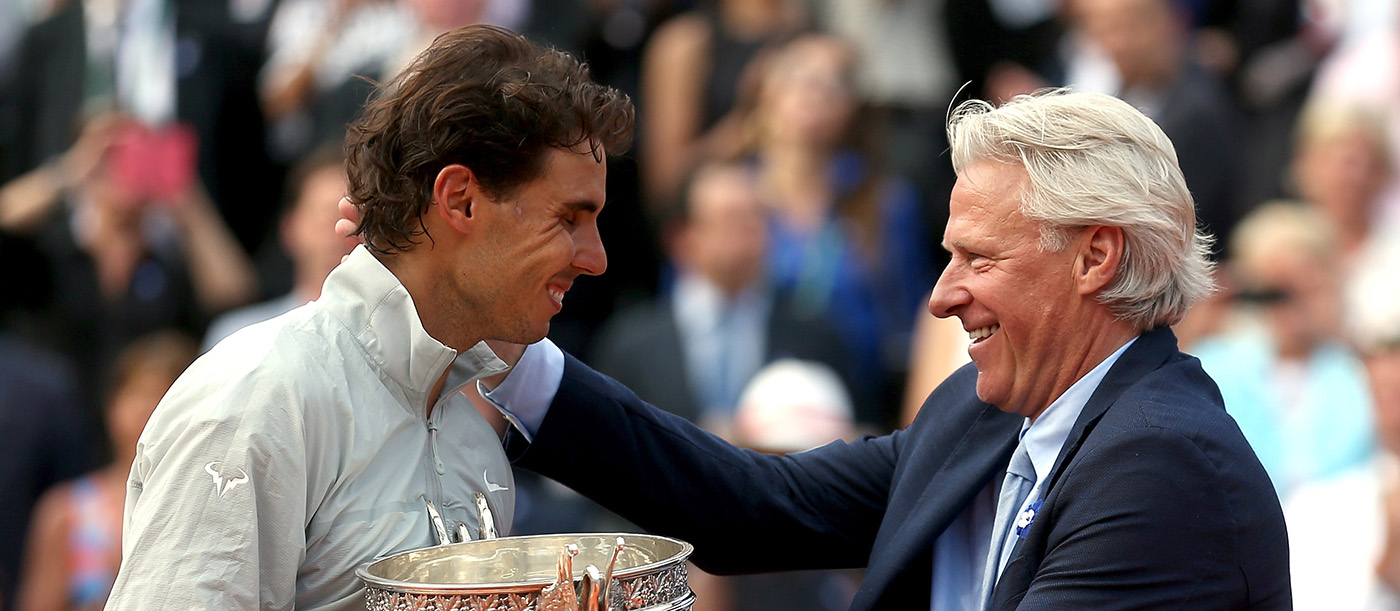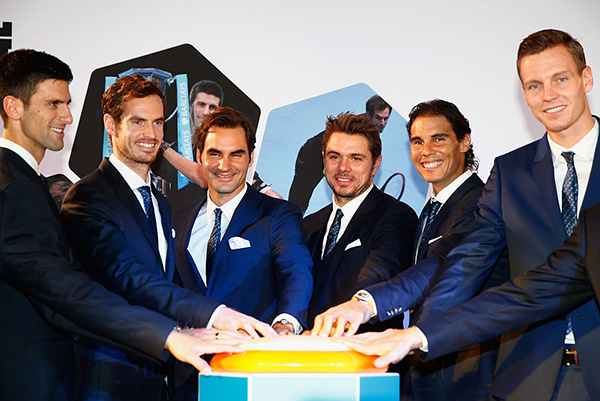
Victory for the Rafa-Roger-led Team Europe over Team World next weekend at the inugural Laver Cup in Prague would fittingly cap a year – and an era – of unprecedented European domination.
The Grand Slam tally in Prague tells the stark tale: Team Europe has a combined 36 majors (Federer’s record 19, Nadal’s 16 and Marin Cilic’s 2014 US Open victory) to Team World’s one: Juan Martin del Potro’s magical run to the 2009 US Open title. The big-hitting, beloved Delpo is the sole non-European major winner in the past 54 Grand Slams.
Often lost in the eulogizing of this tennis Golden Age – with the fabled Big Four, or Big Five of Federer, Nadal, Novak Djokovic, Andy Murray and Stan Wawrinka amassing 53 Grand Slams between them – is that this is a gilded era for European tennis.

Since 2003, the year of Federer’s Wimbledon breakthrough, only four of 60 majors have fallen to non-Europeans: Americans Andre Agassi and Andy Roddick (both former No.1s) and Argentines Gaston Gaudio and del Potro.
Since 2010, the entire roster of 32 majors has been swept by Europeans.
In Davis Cup, European nations have won the famous silver punchbowl in 14 of the past 17 years. Spain, Russia, Croatia, Serbia, the Czech Republic and Switzerland – powerhouses and minnows alike – broke through for their first Davis Cup wins. (The Czechs won as Czechoslovakia in 1980 but the 2012 victory was their first as an independent nation.) Spain, with five titles, is the most successful Davis Cup nation in the 21st century.
Nine different Europeans have reigned as No.1 since the late 1990s, with the Big Four holding a lock on the top spot for 15 years, since Andy Roddick rose to No.1 in the wake of his US Open title, again in that pivotal year of 2003.
The top 10? All European. As Europe also boasts the highest-ranked youngsters in the game in Alexander Zverev (No.4) and Dominic Thiem (No.9) – both touted as future Grand Slam winners and in Zverev’s case, a likely No.1 – expect Euro rule to continue.

How has the Old World come to dominate tennis? Several factors and forces are in play. The slowing of surfaces since the early 1990s has advantaged players who develop on clay, so most of Europe. When Rod Laver captured the last men’s Grand Slam in 1969, three of the four majors were played on grass. The US Open’s shift to hard courts in the 1970s, followed by the Australian Open in 1988, had already paved the way for the rise of the baseline game over serve-and-volley.
The fall of communism in 1989 allowed many behind the Iron Curtain to travel, train or relocate in pursuit of tennis dreams. Among them were Russian No.1s Yevgeny Kafelnikov and Marat Safin. The Zverev family, with son Misha now also a pro, relocated to Germany, where Alexander was born in 1997.
No longer was a Florida tennis academy the only option for aspiring players. Marat Safin, Andy Murray and many other top pros spent their formative years grinding out rallies on the claycourts of Spain, the new tennis epicenter. Ease of travel through much of Europe in the 1990s facilitated access to its plentiful and tightly packed competitive opportunities.
Also impossible to overstate is the power of a role model like Bjorn Borg. The first tennis rock star, Borg was the golden-haired champion who presaged the rise of Europe, winning 11 enthralling majors between 1974-81.
Though Americans, Aussies and Argentine legend Guillermo Vilas held sway in the 1970s, combining for 25 of that decade’s 41 majors, Borg’s influence would be felt even more after his premature retirement at age 26.
No sooner had the Swedish star departed than he was succeeded as a Grand Slam champion by 17-year-old countryman Mats Wilander, followed by Stefan Edberg, also a teenager when he won his breakthrough major at the 1985 Australian Open. Boris Becker was younger still when he crashed through for the first of three Wimbledon wins in 1985. Winning more majors (eight) than any of them and reigning at No.1 for a record 270 weeks was Czech Ivan Lendl. This earlier European Big Four (28 majors combined) shifted the power base from America to Europe in the 1980s.
The US hit back in the 1990s, with crack youngsters Sampras, Agassi, Michael Chang and Jim Courier. All but Chang were No.1 and multiple major winners. Sampras set a new Grand Slam benchmark at 14. Courier ruled as the first American No.1 since John McEnroe. Agassi, the last to win a major – at Wimbledon 1992 – became the first man since Rod Laver to win all four Grand Slams in 1999.
But the new millennium has belonged to the Old World. So much about this generation of champions remains inexplicable and magical. And the end of European rule is nowhere in sight.
“We’ll defend our place as the tennis capital of the world,” Federer recently stated ahead of the Laver Cup. “We’ll uphold Europe’s proud tennis tradition.”